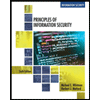a. Which information are used by TCP during demultiplexing at the receiver. b. Suppose Host A sends two TCP segments back-to-back to Host B over a TCP connection. The first segment has sequence number 70; the second has sequence number 130. How much data in terms of bytes is in the first segment? Suppose that the first segment is lost but the second segment arrives at B. In the acknowledgment that Host B sends to Host A, what will be the acknowledgment number? c. Suppose that TCP's current estimated values for the round trip time (estimatedRTT) and deviation in the RTT (DevRTT) are 250 msec and 14 msec, respectively. Suppose that the next two measured values of the RTT are 270 msec and 240 msec. Compute the values of the TCP TimeoutInterval after each of these two measured RTT values are obtained. Use the values of a = 0.125, and ß = 0.25.
a. Which information are used by TCP during demultiplexing at the receiver. b. Suppose Host A sends two TCP segments back-to-back to Host B over a TCP connection. The first segment has sequence number 70; the second has sequence number 130. How much data in terms of bytes is in the first segment? Suppose that the first segment is lost but the second segment arrives at B. In the acknowledgment that Host B sends to Host A, what will be the acknowledgment number? c. Suppose that TCP's current estimated values for the round trip time (estimatedRTT) and deviation in the RTT (DevRTT) are 250 msec and 14 msec, respectively. Suppose that the next two measured values of the RTT are 270 msec and 240 msec. Compute the values of the TCP TimeoutInterval after each of these two measured RTT values are obtained. Use the values of a = 0.125, and ß = 0.25.
Principles of Information Security (MindTap Course List)
6th Edition
ISBN:9781337102063
Author:Michael E. Whitman, Herbert J. Mattord
Publisher:Michael E. Whitman, Herbert J. Mattord
Chapter6: Security Technology: Access Controls, Firewalls, And Vpns
Section: Chapter Questions
Problem 2RQ
Related questions
Question

Transcribed Image Text:a. Which information are used by TCP during demultiplexing at the receiver.
b. Suppose Host A sends two TCP segments back-to-back to Host B over a TCP
connection. The first segment has sequence number 70; the second has
sequence number 130. How much data in terms of bytes is in the first segment?
Suppose that the first segment is lost but the second segment arrives at B. In the
acknowledgment that Host B sends to Host A, what will be the acknowledgment
number?
c. Suppose that TCP's current estimated values for the round trip time
(estimatedRTT) and deviation in the RTT (DevRTT) are 250 msec and 14 msec,
respectively. Suppose that the next two measured values of the RTT are 270
msec and 240 msec. Compute the values of the TCP TimeoutInterval after each
of these two measured RTT values are obtained. Use the values of a = 0.125,
and ß = 0.25.
d. In congestion avoidance phase of TCP RENO and Tahoe, what happens to cwnd
if 3 duplicate ACKs are received?
Expert Solution
This question has been solved!
Explore an expertly crafted, step-by-step solution for a thorough understanding of key concepts.
Step by step
Solved in 3 steps

Knowledge Booster
Learn more about
Need a deep-dive on the concept behind this application? Look no further. Learn more about this topic, computer-science and related others by exploring similar questions and additional content below.Recommended textbooks for you

Principles of Information Security (MindTap Cours…
Computer Science
ISBN:
9781337102063
Author:
Michael E. Whitman, Herbert J. Mattord
Publisher:
Cengage Learning

Systems Architecture
Computer Science
ISBN:
9781305080195
Author:
Stephen D. Burd
Publisher:
Cengage Learning

Principles of Information Security (MindTap Cours…
Computer Science
ISBN:
9781337102063
Author:
Michael E. Whitman, Herbert J. Mattord
Publisher:
Cengage Learning

Systems Architecture
Computer Science
ISBN:
9781305080195
Author:
Stephen D. Burd
Publisher:
Cengage Learning